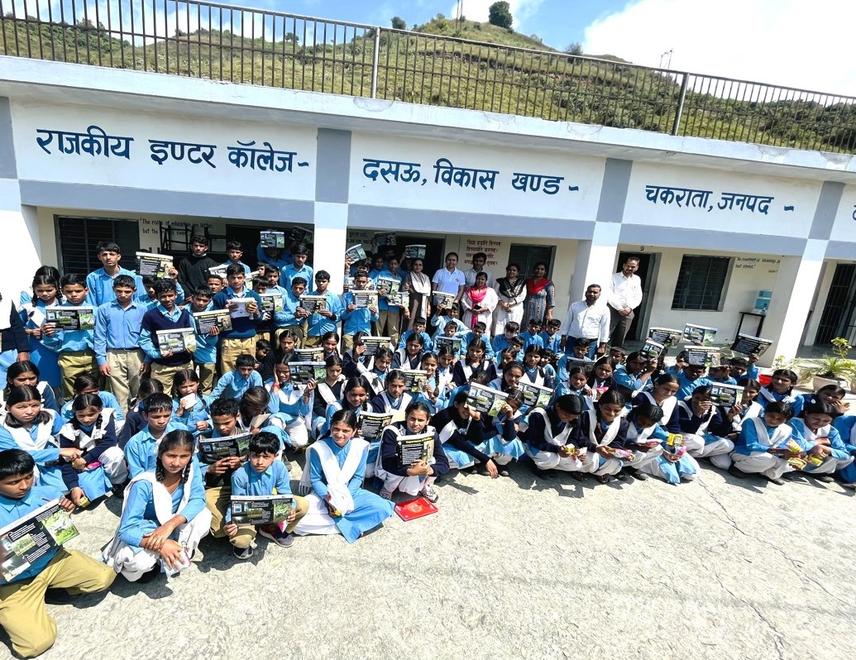Article featuring the project.
Illuminating India: The Nationwide Firefly Conservation Initiative - Antennae magazine
24 Dec 2024 Nanda Devi Biosphere Reserve, Uttarakhand, India, Indian Sub-continent Invertebrates
Assessing the Status of Fireflies and its Conservation Practices through Community Participation in Doon Valley, Uttarakhand, Western Himalaya
Monitoring of Fireflies Population and their Conservation Escalation through Grass-Root Participation in Western Himalayan Region Uttarakhand, India
Fireflies are soft-bodied beetles under the order Coleoptera (family Lampyridae) which are known to exhibit magnificent bioluminescent behaviour. They are highly sensitive to light pollution and other environmental pollutants, making them excellent bio-indicators of healthy ecosystems (Viviani et al. 2010). Their larvae play a crucial role in natural pest control by feeding on garden pests like snails, slugs, and other small invertebrates, making them valuable bio-control agents. Beyond these ecological services, fireflies also provide livelihoods to communities worldwide by attracting tourists, (Symondson 2004; Wang et al. 2007; Lewis et al. 2021).

Conservation awareness workshop for students in Chakrata Inter-College Dehradun, Uttarakhand, India. ©Nidhi Rana.
Despite the ecological and economic significance, studies on fireflies in India are limited, making their status data-deficient with growing population decline concerns. Moreover, only a few studies have focused on escalating community awareness. Thus, two studies were conducted in different areas of Dehradun district in 2021 and 2023, respectively. In the studies, we addressed a portion of the knowledge gap by creating a primary database of fireflies, documenting seven species under four genera from the Western Himalayan region, and initiating widespread conservation awareness among local communities.
Thus, building on our previous information and observations, the current project aims to assess firefly diversity across different villages in the Nanda Devi Biosphere Reserve (NDBR) – a World Heritage site in Chamoli district of Uttarakhand, India – to enhance conservation awareness among the residing communities in the region (i.e., Garhwali and Bhotiya communities). This study will also examine the influence of various ecological factors – such as temperature, disturbance gradients, precipitation, humidity, and wind speed – on firefly populations. The Garhwali and Bhotiya communities residing in the NDBR will be actively engaged and empowered through knowledge-sharing initiatives and workshops on firefly and biodiversity conservation. The project will also explore the potential for sustainable income generation through firefly-based eco-tourism.
Article featuring the project.
Illuminating India: The Nationwide Firefly Conservation Initiative - Antennae magazine